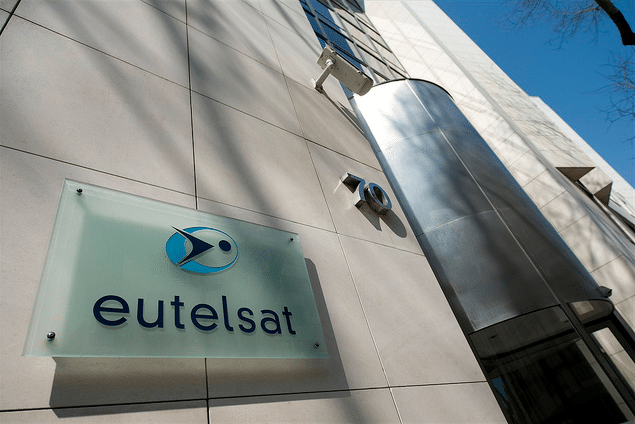Latest News

Eutelsat headquarters in Paris, France. Photo: Eutelsat
Eutelsat saw its overall revenue drop approximately 4.5 percent in the six months to the end of December 2018, compared to the same stage in 2017. In those six months, Eutelsat achieved total revenues of $742.6 million (658.1 million euros). Net profits for the six months reached $169.7 million1(50.4 million euros) a fall of just under five percent compared to the same stage last year.
The operator continues to find the video market tough, despite recent announcements with the likes of the Ethiopian Broadcasting and Afghanistan Broadcasting System (ABS). While video still translates into 66 percent of Eutelsat’s revenues, video revenues in the six months to the end of December were $487.5 million (432.1 million euros), down from $493 million (437 million euros) compared to the same stage last year.
However, mobile connectivity showed positives figures. For the six months to the end of December, the company saw connectivity revenues reach $45.1 million (40 million euros), a close to 7 percent increase compared to the same stage last year.
Analysts React
For these set of results, many analysts highlighted video performance video as a concern. “Video continues to give neither side of the secular decline debate the trump card they seek,” said JefferiesSatellite Equity Analyst Giles Thorne. “In the past 6 quarters, Video has outperformed 3 times and underperformed 3 times — it never quite does what either camp of the secular debate wants it to do. In that context, we note another ambiguous performance at Hotbird: on the negative side, a big drop in channels (-20 from -4 / -14 in 1Q19 / 2Q18) driven by an anticipated simulcast switch-off (and surely more will follow); on the positive side, 4 percent year-on-year Mbps volume growth as the HD migration Eutelsat has been pushing for 2-3 years ramps (HD penetration of 35 percent still lags MPEG-4 penetration of 60 percent).”
Thorne added that Eutelsat’s management, again, expressed that Hotbird revenue is stable and performing to their expectations, with the volume growth offsetting the HD price promotions to deliver broadly stable Hotbird revenue. Critically, those customers coming out of the FY16/17 promotions are now on the ‘rate card’ front-book prices, Thorne added.
Laurie Davison, satellite equity analyst at Deutsche Bank, also expressed that video is seeing an accelerating decline. “The core video revenues were down 2.4 percent in the second quarter, showing no significant improvement from -2.7 percent at 1Q. While contracts were announced with the Ethiopian Broadcasting Corporation and Afghanistan Broadcasting System, these are in low pricing regions and the implication is still that the core Western European and Latin America revenues are under pressure. The disclosure of Hotbird channels down 2.5 percent year-over-year (1002 to 978) further reinforces these concerns,” he said.
Davison was also skeptical of Eutelsat’s new guidance, which seemed to indicate a return to slight growth over the next fiscal year. “After this 1H result, this new guidance deserves skepticism and there is even more risk around another cut to this year. On the company definition of operating revenues, 2Q revenues were down 3 percent; accelerating decline reflecting the video miss (the decline on total revenues was 5.7 percent on total group; underlining our concerns about definitional shuffling referred to above). This takes 1H decline on operating revenues to 2.4 percent, requiring an equal bounce back to meet flat for full-year,” he said.
Paul Sidney, a satellite equity analyst at Credit Suisse, believes Eutelsat’s reiteration of both FY19 guidance and medium-term targets should provide some relief for Eutelsat and the global satellite sector, after Eutelsat’s Q1FY19 profit warning. “A key question is whether Eutelsat is still guiding to ‘stable to up’ video revenue growth in FY19 as H2 video revenues are boosted by (1) 3 new video contracts — Ethiopian broadcasters, Orange Slovensko and Afghanistan Broadcasting System; and (2) an easier comparison for Fransat. In summary, we believe Eutelsat needs to deliver on a stronger H2 to achieve its FY19 revenue guidance.”
Thorne added that Eutelsat’s management are happy with current FY19 consensus, and cited a number of reasons why this was the case. “The drivers of the 2H inflection are well understood — new broadcast contracts in video, ramp-up of Konnect Africa (though the already skeptical sentiment will be knocked by the message that logistical issues means the ramp will be slower than expected) and a new maritime contract/the China Unicom contract in mobile connectivity,” he added.
Get the latest Via Satellite news!
Subscribe Now